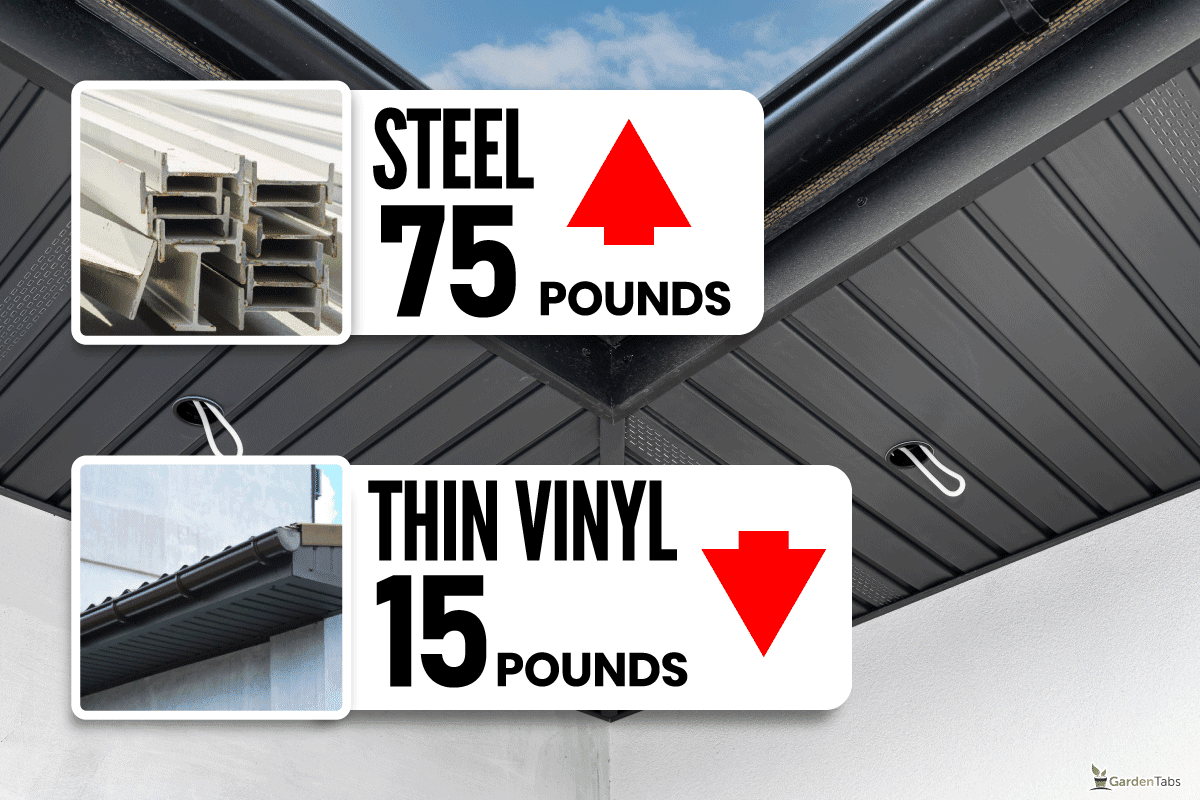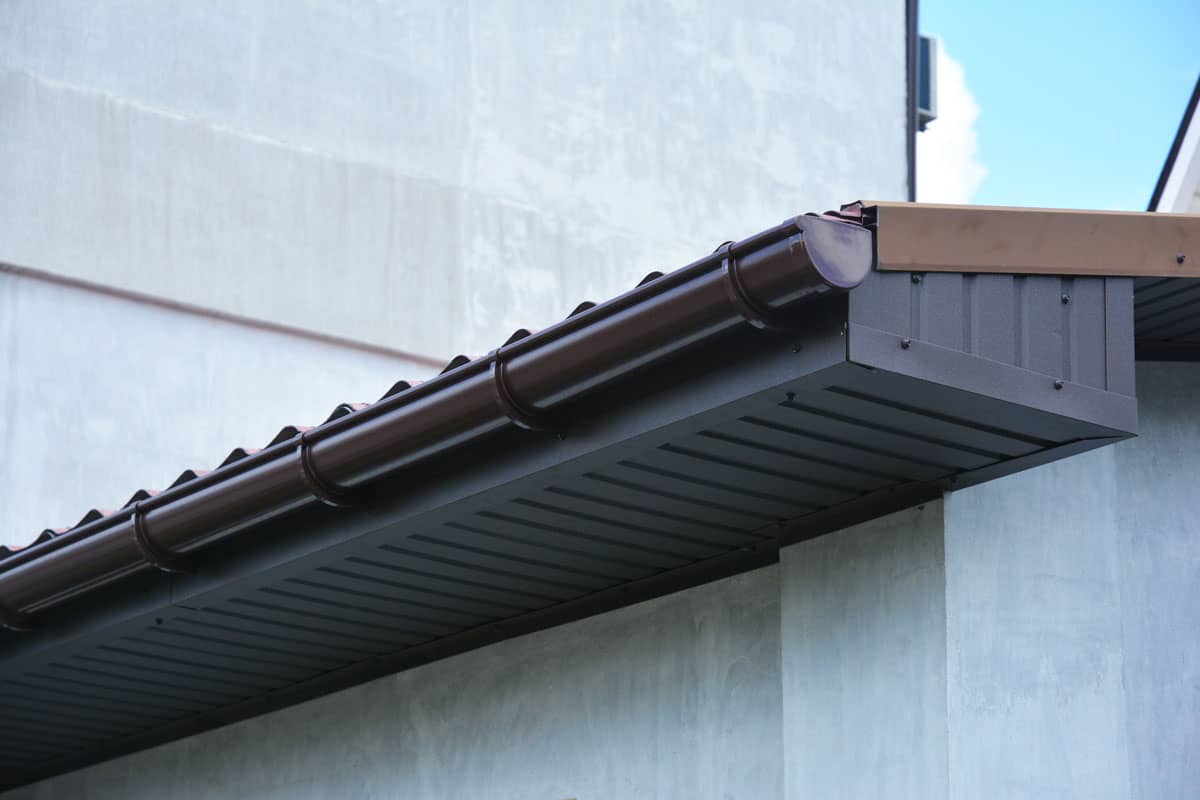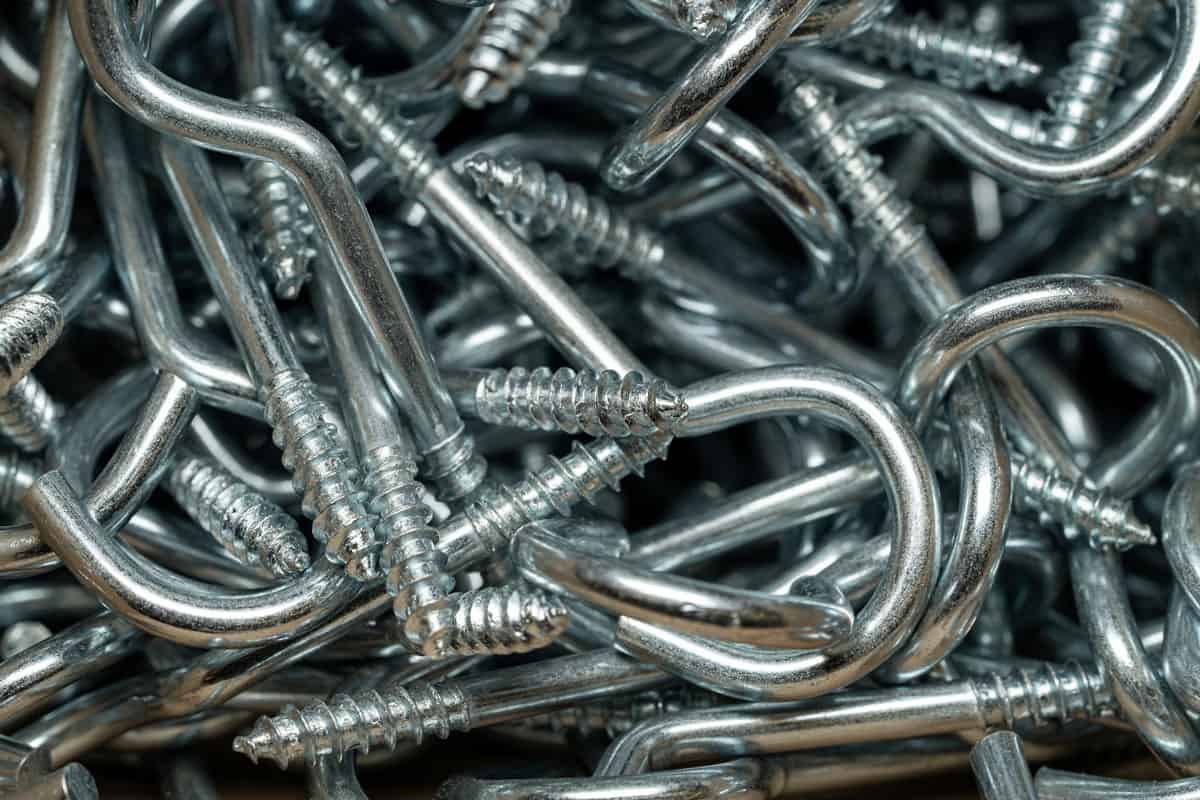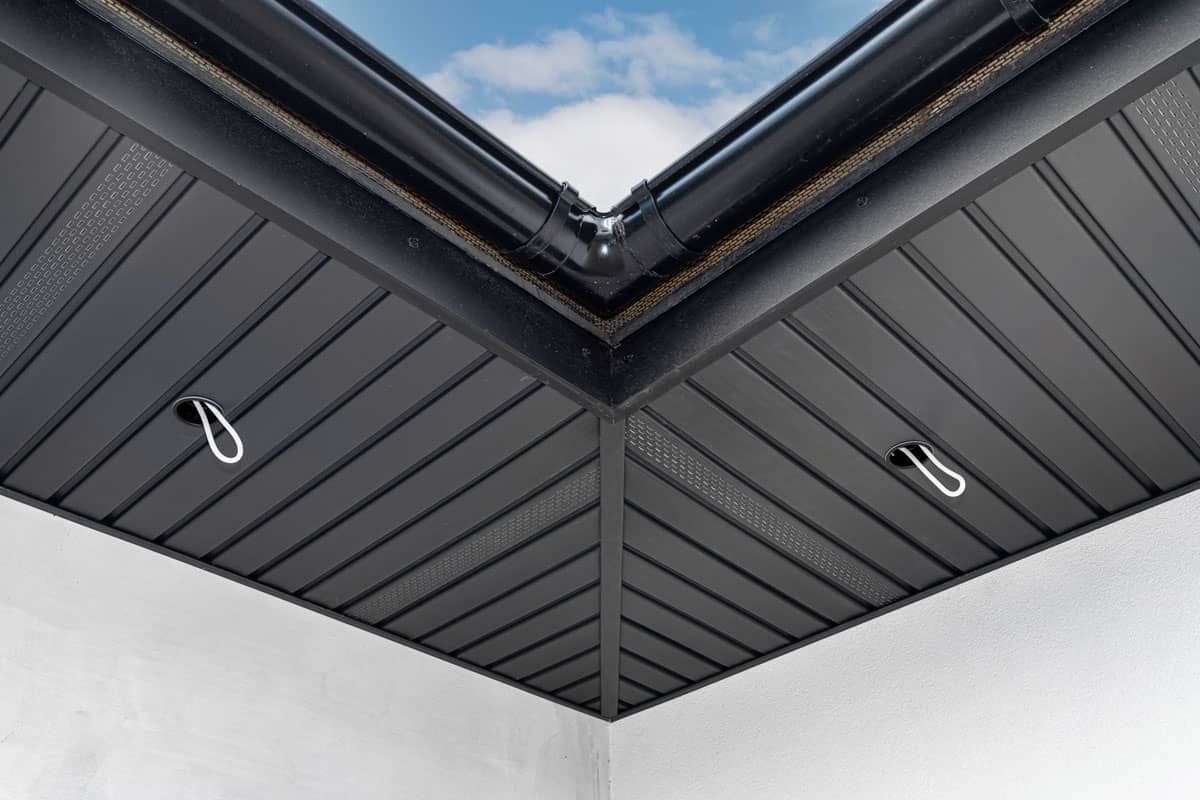Would you like to know if you can hang plants from your soffit? Well, we have researched this topic and have answers for you. Knowing if you can hang plants from your soffit is vital to avoid damaging them.
You can hang plants from your soffit. To ensure you don't damage your soffit, you must use special soffit hangers or screw hooks into a supporting 2x4.
In this article, we will learn if you can hang plants from your soffit. We will also learn the answers to other interesting related questions, such as how do you hang plants from your soffit, and what material of soffit can support the most weight? Keep reading to learn more.
Can You Hang Plants From Your Soffit?
You can hang plants from your soffit, but you must use specific methods to avoid damaging the soffit. Let's look at the best practices for hanging plants from your soffit and learn why they're effective.

Soffit Hooks
Soffit hooks are little plastic or metal hooks with a lip. The lip of the soffit hook slides into either the side or edge of the soffit to suspend a plant.
These soffit hooks help spread the hanging plant's weight over several inches. While these hooks are straightforward to install, they do have drawbacks.
Soffit hooks are only effective for light plants weighing no more than fifteen pounds. These hooks are also not very resistant to the wind, which can blow them out of place. Using these in areas where strong wind gusts are unlikely would be best.
Soffit Hanger Bar
Soffit hanging bars use an extendable crossbar to spread out the weight of a hanging plant over two areas. These bars are also far more resistant to wind.
While soffit hanger bars are more wind resistant, they don't significantly increase weight capacity. Even a well-secured soffit hanger bar can only hold fifteen pounds.
Ceiling Hooks
Ceiling hooks are a great way to secure a hanging plant to your soffit. For a ceiling hook to get a good grip on your soffit, you must locate a supporting 2x4. By connecting the ceiling hook to a supporting 2x4, you can ensure a firm grip that can hold over one hundred pounds.
The only drawback to using ceiling hooks is locating a support beam. Different houses space them differently, so you will need to check for beams manually.
One way to check is by tapping along your soffit and listening for solid sounds. If you can't hear a difference when knocking, you can also try lifting off a few soffit panels until you find one.
Once you find a support beam and secure your ceiling hook, you will have no problem hanging a plant from your soffit.
What Material Of Soffit Can Support The Most Weight?

Soffits can be made from several different materials, each supporting a different amount of weight. Let's learn what materials soffits can be made from and which can support the most weight.
Aluminum
Aluminum soffits can support up to thirty-five pounds. Not only can aluminum soffits support a decent amount of weight they are also resistant to corrosion and highly durable.

Steel
Steel soffits can support up to seventy-five pounds. These soffits are very strong but can become damaged by rust over time. Steel soffits that are damaged by rust will not be able to support as much weight, so ensure they are in good condition before hanging plants from them.
Thin Vinyl
Thin vinyl soffits can support up to fifteen pounds. What these soffits lack in raw strength, they make up for in price and durability. PVC soffits will not corrode over time, making them great for wet climates.
Chambered Vinyl
Chambered Vinyl can support up to thirty pounds. The increased strength of Chambered vinyl comes from its design. Chambered vinyl has a chamber filled with foamed PVC and is surrounded by two thick pieces of vinyl.
Fiber Cement
Fiber cement soffits can support up to sixty pounds. These soffits use a blend of fiber with sand and cement to create a tough soffit that is weather resistant and capable of holding some weight.
Wood
Wood soffits can hold between twenty-five and thirty-five pounds, depending on the type of wood. While wood soffits look great and can hold a light to medium plant, they are more susceptible to rot over time.
As wood soffits decay, they will lose their ability to support plants. It would be best to replace wood soffits often if you wish to use them to hang plants.
Conclusion
While there are a variety of soffits with various pros and cons, steel soffits can support the most weight at seventy-five pounds. It would be best to replace rusting steel soffits before hanging plants on them since it can reduce their integrity.
How Do You Hang Plants From Your Soffit?

How to hang plants for your soffit will vary depending on how you hang them. Let's learn how to hang plants from your soffit for each of the methods above.
Soffit Hooks
Soffit hooks are the easiest of all the methods for hanging plants from your soffit. These hooks can vary in design, but all have a lip and a hook.
First, look along your soffit for the area you want to hang your plant. Decide whether you want your plant hanging from the center of a soffit panel or the supporting edge.
Once you know where to hang your plant, take a soffit hook and slide the lip into a gap in the soffit. If you are attaching the hook to the side of a panel, it will be the gap between panels. If you are connecting the hook to the edge, it will be the groove that the panels rest on.
Once the lip of the hook is secured in the groove, you can hang your plant from it. Remember that soffit hooks can only hold up to fifteen pounds, so it would be best to weigh your plant before hanging it.
If you want to try soffit hooks, here are two of the best available on amazon.
Aluminum Soffit Hooks
You can find this product here on Amazon.
Hillman Soffit Hooks
You can find this product here on Amazon.
Soffit Hanging Bar
To use a soffit hanging bar, slide the two tubes of the bar together. Now use the button adjuster to adjust the length of the bar so that it perfectly fits between the two sides of your soffit.
The soffit hanging bar should be resting on the supports that hold up to the soffit panels. Once the bar is secured to the soffit, you can attach the hanging clip to the bar. Pull apart the spring on the hanging clip and allow it to close around the bar.
You can now attach a plant to the hanging clip. Remember that while a soffit hanging bar is less likely to be knocked loose, it can't hold more weight than soffit hooks. It would be best to weigh your plants before using a soffit hanging bar.
Ceiling Hooks

To hang a plant from your soffit using ceiling hooks, secure them to a supporting 2x4. One method to find a supporting 2x4 is listening for changes in sound.
Start on one side of your soffit, near where you want to hang your plant, and knock on the panels. You will hear a hollow sound if there is no support and a dense sound if there is one.
If finding a support beam through knocking is proving difficult, you can remove panels until you find a support beam. If you have an attic crawl space, you can also try checking from there for support beams. It can be helpful to leave one panel removed while checking the crawl space to allow you to know relative to that open panel where the support is at.
Once a support beam has been identified, you can drill a pilot hole through the soffit panel directly under the support beam and screw in your ceiling hook. Once the hook is tightly secured to the support beam, you can hang your plant.
If you want to try ceiling hooks, here are two of the best available on Amazon.
White Ceiling Hooks
You can find this product here on Amazon.
Beheno Ceiling Hooks
You can find this product here on Amazon.
Final Thoughts

In this article, we learned you could hang plants from your soffit, provided you use one of the proper methods. We also learned that steel soffits could support more weight than any other soffit type.
Remember, unless you screw into a support beam, a standard vinyl soffit can only support fifteen pounds.
We hope you enjoyed this article. If you want to learn more, check out some of these other posts.




